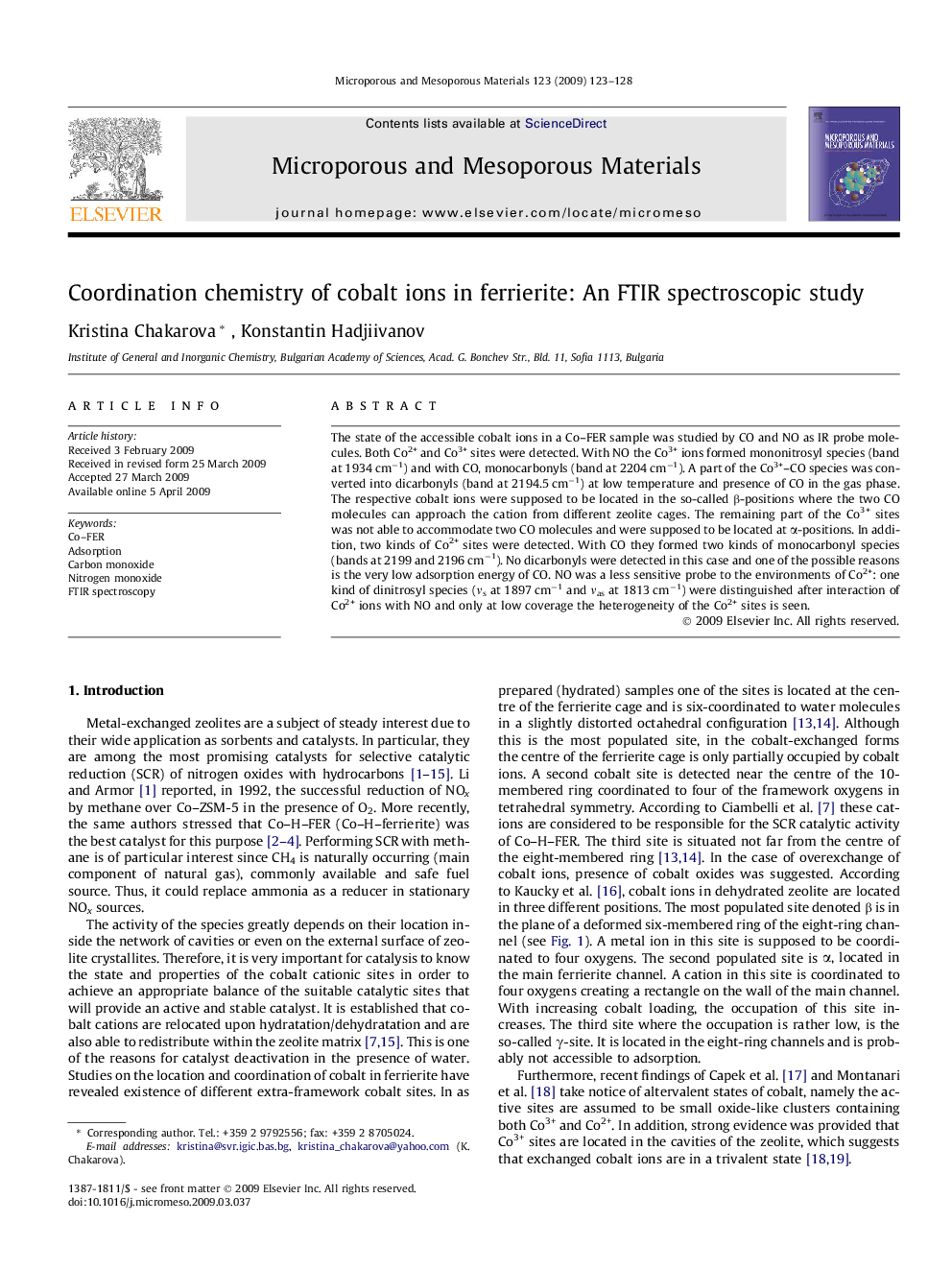| Article ID | Journal | Published Year | Pages | File Type |
|---|---|---|---|---|
| 74873 | Microporous and Mesoporous Materials | 2009 | 6 Pages |
The state of the accessible cobalt ions in a Co–FER sample was studied by CO and NO as IR probe molecules. Both Co2+ and Co3+ sites were detected. With NO the Co3+ ions formed mononitrosyl species (band at 1934 cm−1) and with CO, monocarbonyls (band at 2204 cm−1). A part of the Co3+–CO species was converted into dicarbonyls (band at 2194.5 cm−1) at low temperature and presence of CO in the gas phase. The respective cobalt ions were supposed to be located in the so-called β-positions where the two CO molecules can approach the cation from different zeolite cages. The remaining part of the Co3+ sites was not able to accommodate two CO molecules and were supposed to be located at α-positions. In addition, two kinds of Co2+ sites were detected. With CO they formed two kinds of monocarbonyl species (bands at 2199 and 2196 cm−1). No dicarbonyls were detected in this case and one of the possible reasons is the very low adsorption energy of CO. NO was a less sensitive probe to the environments of Co2+: one kind of dinitrosyl species (νs at 1897 cm−1 and νas at 1813 cm−1) were distinguished after interaction of Co2+ ions with NO and only at low coverage the heterogeneity of the Co2+ sites is seen.
